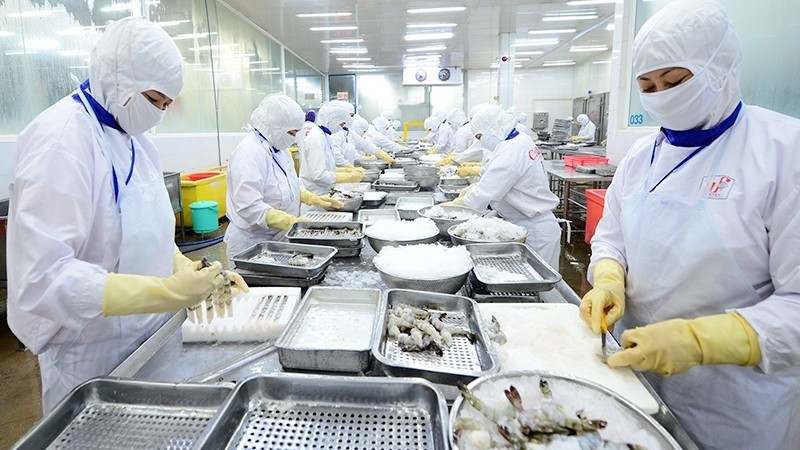Viet Nam’s agriculture determined to achieve 65 billion USD export target
The agricultural sector’s export revenue reached 33.5 billion USD in the first half of 2025, up 14.3% over the same period last year. To fulfil the full-year target of 65 billion USD, the Ministry of Agriculture and Environment (MAE) has directed the whole sector to take bold measures and leverage market opportunities to accelerate exports in the final months of the year.

Accelerating towards the 65 billion USD target
As the global economy continues to face uncertainties, Viet Nam’s agricultural sector has still recorded positive export growth. According to the MAE, total agricultural exports during the January-June period were estimated at 33.5 billion USD, up 14.3% over the same period last year, with strong growth seen in key exports such as coffee, rubber, pepper, cashew nuts, timber and timber products. However, rice export revenue fell by 9.8% to 2.6 billion USD, while fruit and vegetables plunged by 17.1% to 2.7 billion USD.
Such a strong performance was attributed to the sector’s efforts to maintain production, strengthen the supply chain, diversify input sources, strictly control product quality, standardise processes in line with international practices, ensure transparency and traceability of origin. At the same time, Viet Nam also enhanced trade promotion activities, effectively tapped into the 17 signed free trade agreements, helping to expand markets and support enterprises to increase exports.
To fulfil the full-year target of 65 billion USD, the MAE has assigned specific targets for each commodity. The sector’s export revenue needs to reach 14-15 billion USD in the third quarter and accelerate to at least 16 billion USD in the final quarter.
The specific targets in the second half of 2025 are 10.1 billion USD for timber and timber products, 5.4 billion USD for seafood, 3.1 billion USD for rice, 4.9 billion USD for fruit and vegetables, 0.53 billion USD for pepper and 2.3 billion USD for cashew nuts. Notably, with an export revenue of 5.5 billion USD in the first half of 2025, coffee has already surpassed the full-year target and is expected to reach 7.5 billion USD in 2025.
MAE Minister Do Duc Duy noted that besides these achievements, the sector still faces risks from US tariff policy, protectionism, trade defences and stricter technical standards imposed by many countries. Therefore, in the second half of the year, the whole sector needs to take bolder actions to maintain the share in established markets and expand to potential markets such as China, Japan, the Republic of Korea, ASEAN and the European Union.

Building the foundation for sustainable exports
Under an MAE plan, in the remainder of the year and subsequent years, the sector will continue to follow the agricultural supply chain-based development strategy, enhance the competitiveness of agricultural products, expand export markets, while stepping up digital transformation and enhancing the quality of statistics and market forecast.
The sector will also fine-tune institutional frameworks and policies on agricultural product market development, simultaneously implement commodity development strategies, strictly control quality and foster trade promotion both at home and abroad.
For fresh fruits, the Department for Crops and Plant Protection emphasised the foremost requirement of ensuring quality and food safety, especially in demanding markets such as the EU, Japan and China. Localities and enterprises need to strictly comply with regulations on growing area codes, packaging facility codes, phytosanitary inspection and forest protection.
For the Chinese market, the SPS Viet Nam Office has worked with the General Administration of Customs of China to facilitate the updating of geographical names and support enterprises to deal with issues when changes occur in the addresses of growing areas and packaging facilities.
For timber, coffee and seafood, which are facing US tariff pressures, the MAE is asking enterprises to enhance their risk management capacity, comply with origin and environmental regulations, and technical standards. At the same time, it is necessary to consider diversifying export markets and focusing on value-added, organic and environmentally friendly products.
With strong resolve and coordinated actions, the agricultural sector not only sets an export target of 65 billion USD in 2025 but also lays a solid foundation for the next phase of sustainable development.








